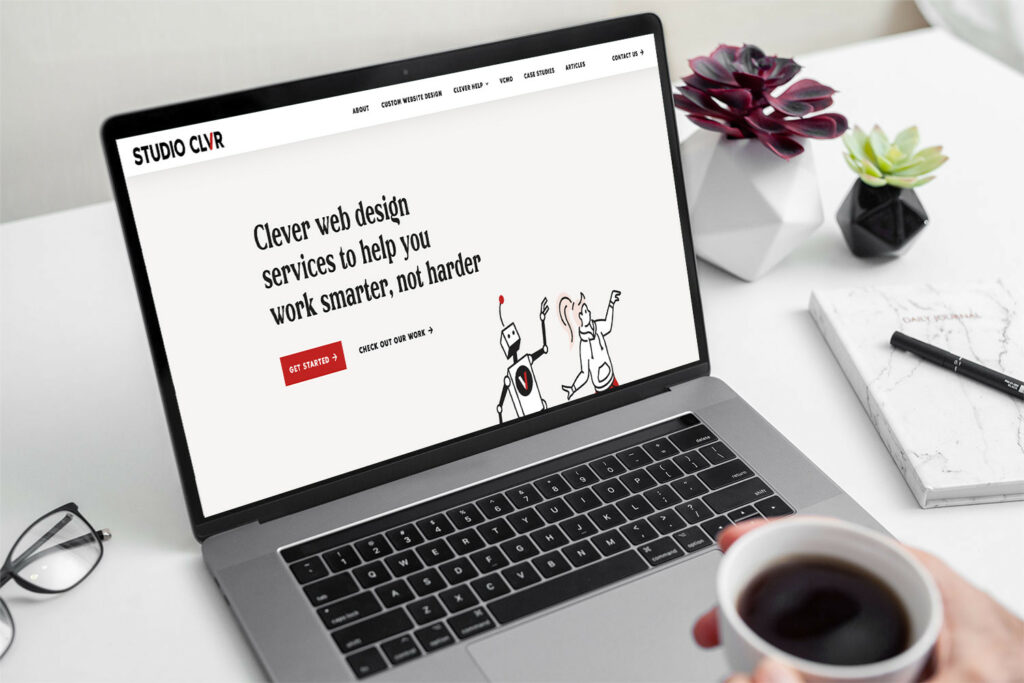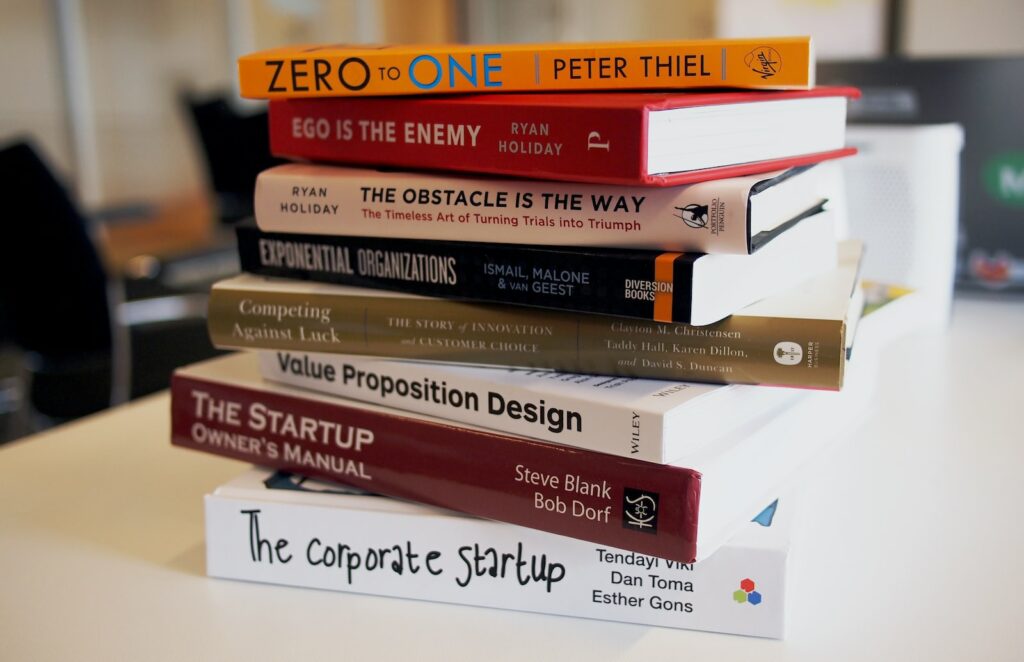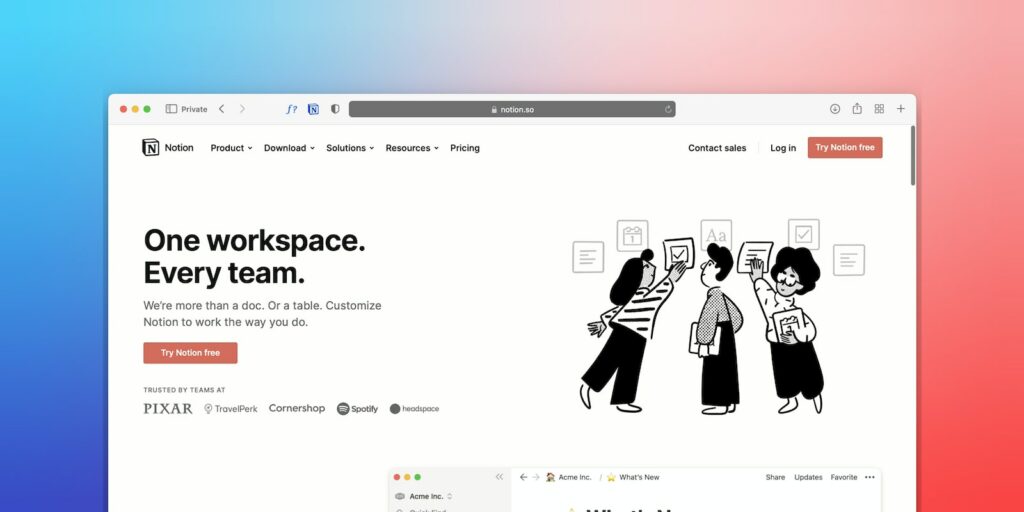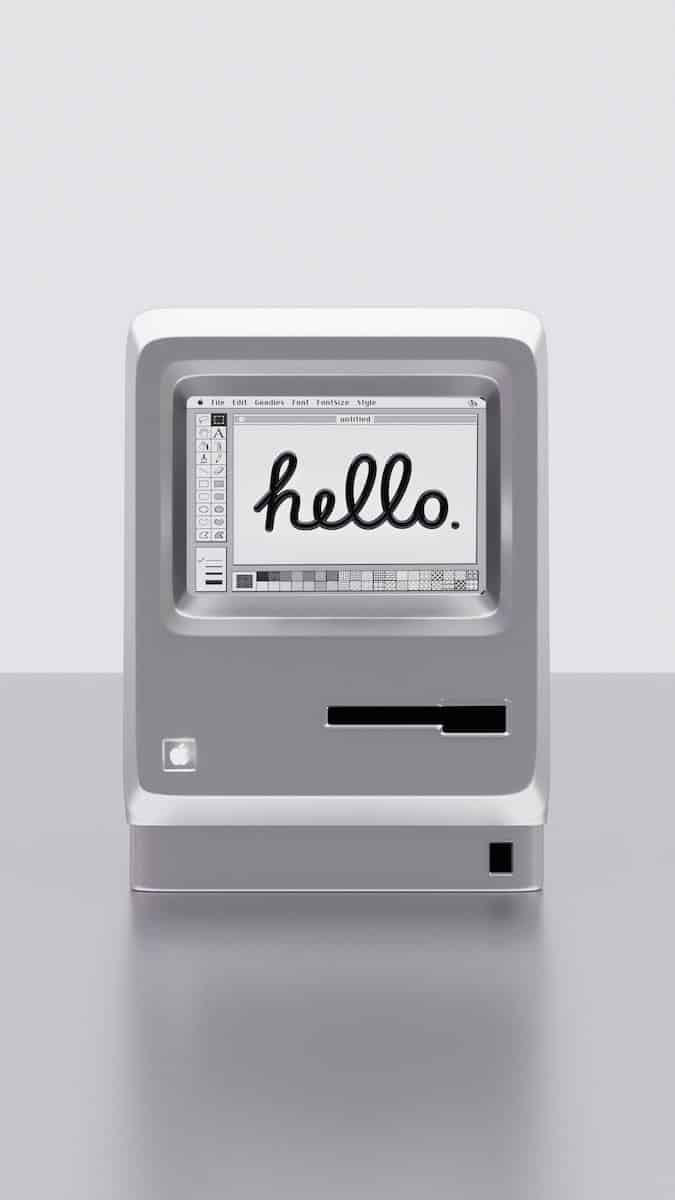Business reinvention: the nine steps I used to re-think everything

I think most business owners can relate to coming to a point in running their business when it no longer feels like ‘you’ anymore. I’d been running my web design and marketing agency successfully for years when I started the process to re-imagine what I wanted my business to look like.
This article covers the nine key steps I took to re-position my business.
Table of Contents
Step 1: Reconnaissance

I think a lot of business owners can relate to the idea that the COVID-19 pandemic was an opportunity for a business and personal reset. We all had a wake-up call and an opportunity to really consider what’s important, what we wanted to do and how we wanted to live our lives.
You’ve heard it before — when you’re busy working ‘in’ the business, it’s an easy trap to never get around to working ‘on’ the business. That was me and I knew it.
I sat myself down with a blank sheet of paper and started thinking about my business from a completely fresh perspective. I asked myself all the really hard questions that I ask my clients. Then I looped in another designer to hit me with some even harder questions that I couldn’t see from my position on the inside.
I did a massive audit of all of our projects over the past three years. My aim was to work out where I could niche down and what that might look like. I quickly discovered that the most gratifying work for me is end-to-end projects involving strategy, brand identity and website design. The clients leaving the best reviews were those for whom I had developed systematised digital operations around their website, making it easier for them to run their business. I was LOVING that work, and my clients were too.
Step 2: Identify gaps and opportunities

This process takes time, but asking the right questions is essential to framing the problems the business was facing and recognising the opportunities that were staring me in the face.
The main problems with the business were:
- The focus was unfocused! I was saying yes to everything from giant custom websites to huge display ads for bus shelters to flyers and promo banners. I needed to narrow my niche and I knew I could have fun with a new message and identity that could better connect with a more tightly defined target audience.
- The business was worth nothing as it stood. If I had wanted to sell it or merge with another firm to grow, all the work of the past 7 years had zero value. I had come to a point where I was looking ahead to the end game — or at least options for an end game — and that meant designing a business with value.
- I wanted less stress in my life and rethinking the business was partly about capacity building by improving processes and efficiency.
- I was using (and paying for!) too many business systems, many of which overlapped.
- I needed a brand message that would better reflect my mission and values instead of messaging that reflected all the things I thought I was meant to be doing/thinking/marketing when I first started my business. It was time to design a business that was comfortable and easy and frankly a whole lot more, well, me.
The main opportunities for the business were:
- I had a great group of loyal retainer clients who were looking at their own businesses through a similar lens and who I knew would trust me through a big change. These folks were also a very specific subset of my overall client list. I was able to hone my audience based on how well I worked with these exact people. These folks are all ex-corporate professionals, experts in their fields and building businesses that break the corporate mould. I knew that these people and these projects all have an energising effect on me and I could start to recognise the value I was adding to these ventures (beyond being just a go-to designer) in a way that I hadn’t been able to articulate before.
- I’m a tech nerd. I naturally seek out faster ways to do things using technology and my brain sees everything as an interconnected map. It’s a big-picture way of viewing the world. Back in the early days of apps I even taught myself to code so I could make apps of my own — but quickly discovered that coding is far too detail-oriented for my attention span. Understanding this showed me my opportunities in big-picture strategy and in hiring for the tasks I’m not so great at.
- I’m a systems geek of the highest order. Before I started my business I was known for a time as the go-to gal for advice on building out digital workflows for publishing companies. I was based in London then and was taking calls from people I’d never met across Europe and the States, all reaching out to pick my brain about workflows and systems. I used to think this system-based thinking just made me a pedantic rule follower. But in reality, this is a massive differentiating factor for me and for my business. When it comes to any business, rules can be empowering. The systems—be they technology or workflow—are what make it easier to run a business in a consistent, reliable and scale-able manner. That is value. And that kind of value in a business is gold.
Step 3: Articulate value in the business

When I started this process three years ago, I’d been having a lot of conversations with my financial planner about exit strategies. To be honest, this isn’t something that I had thought about at all when I first started my own business in 2012. I was thrilled just to be able to make a decent living for myself and was proud of building a business from scratch that has survived the first year, then the first 5 years, and then a global pandemic. Phew. Pat on the back.
But that’s not enough. What’s the plan for the next 10 years? Will the business be worth anything?
I knew I needed a brand shake-up and to create something more closely aligned with my thoughts on where this was all going. I was keenly aware that solidifying my brand foundations was going to be a key driver to proving my authority and expertise with my target market.
I need my brand to clearly reflect who I am — a highly experienced designer and digital marketing strategist. And I wanted my new brand foundations to explain my key differentiator in the market — the clever approach I take to websites from a whole-of-business perspective that is unique in the world of web design.
This re-naming exercise hasn’t so much been about pivoting to a new market, as narrowing down among the clients I was already serving to focus on the segment of my target audience where I could provide the most value and with whom I wanted to form long-lasting partnerships — my ideal clients.
Changing my business name to Studio Clvr clearly reflected the narrowed focus of building clever websites that make running an online business easier. My niche is now clear, and I can more easily say no to work that isn’t a good fit. Studio Clvr is built around doing what I do best — strategic websites and marketing systems — for the clients I can help the most — service-based businesses (specifically professional services, legal, financial planners, healthcare practitioners and small technology teams).
On a personal level, I feel like this change has brought my knowledge and experience full circle (for now, I will of course continue to learn and grow!). I can combine my in-house big company expertise with everything I’ve learned over the past decade working with over 500 clients across different sectors and business sizes. It all came together in a way that still (3 years on) feels easy and exciting!
Step 4: Create capacity; allowing me to do more client work and less admin

Running an agency with a growing team is stressful. There are no two ways about it. No matter how awesome your people are (and I had awesome people), managing a team is hard work and for me I felt like I was spending too much time training staff and putting out fires, leaving less time for me to be fully present with the clients I loved or the business itself. Which is precisely why my old website hadn’t been updated in six years (a seriously dire state of affairs for a web designer!).
Add to that my changed life circumstances. My son was born in 2018 and working all hours of the night is no longer something I am available to do, nor is is something I want to do. I needed to set better boundaries around my time. Removing stress and improving efficiency had to be key factors for my business reinvention.
I knew that the best way to create more capacity in my business was to go deep on my workflows and my services to see what could be streamlined. I mapped every service and every client journey in incredible detail to come up with a uniform system for each of my core services and to work out how those services could be changed to be more efficient both on the operations side and on the client delivery side.
All of my workflows have been streamlined and I’ve productized services to avoid the need for any time-consuming proposals (outside of the 4 custom web design projects I take on per year) and to reflect the more strategic work I want to do rather than the smaller one-off transactional design jobs.
This work has opened up some excellent capacity opportunities across services, tech and systems.
Step 5: I leveraged tech intelligence to clever up my business systems

The work I had done to create capacity in the business, also opened up opportunities to leverage technology to increase that capacity further. I’m talking consolidation, integration and automation.
Back then, my systems were a mess and I knew it. I had ‘shiny object syndrome’ big time and was constantly trying the latest CRM or project management tool. The downside is that I spent a lot of time and money trying to find the system that worked for my business. On the plus side, I learned a lot about the major systems out there. I’d also worked on loads of these tools for my clients, so I had a reason to explore them all and an opportunity to go deep into how they work and how they actually benefit a business by creating order, capacity and repeatability. I’ve worked in Hubspot, Infusionsoft/Keap, Monday, Zoho, Pipedrive, Notion, Trello, Asana, Plutio, MailChimp, ConvertKit, ActiveCampaign, Campaign Monitor and more. So I know their benefits and limitations and I know what systems will and won’t work for what businesses like mine are trying to achieve.
In the end, I built my own CRM using Notion. This isn’t as scary as it sounds and doing things my way using a tool that allowed for the sorts of database relationships that a CRM provides alongside my technical knowledge of automation allowed me to build a system perfect for my business and for my clients. From tracking leads to measuring customer value, to seamlessly talking to my email marketing software (ConvertKit) and the Studio Clvr website (where most leads are generated), to project management and a range of automation triggers that generally mean I’m doing way less admin, way less decision making around what happens next, and my clients are feeling better looked after as they are nurtured through a system that was created to specifically suit their needs, instead of a system that fits ‘most’.
From my website to email marketing, to CRM, payment gateways to invoicing, and to employee task management, everything is connected. This was a chunk of work, I won’t lie. But it has saved so many hours every week that it’s taken no time at all to make my money back on the investment to sort the tech out.
Step 6: Create the plan/system

My services are now so simple and I love the way everything is working.
I basically now have two fully productized recurring revenue streams:
- Clever Care plans for website hosting, security and care.
- A virtual Chief Marketing Officer service to guide marketing from that big picture view with loads of data to strategically inform decisions for better ROI from your in-house teams.
And two pay-as-you-go revenue streams:
- I have a single productized service in my Clever Day offering that provides ad-hoc strategy and implementation across website help, graphic design help and marketing help. This creates a seamless workflow for a single one-day service while maintaining the flexibility to support my clients in a custom way depending on their specific needs. This service in particular has proven to be a massive hit, I think the success is just because it’s so darn easy for everyone — book > pay > prioritise task list > do work fast > smile — it’s done. Some clients are also pulling these days into a retainer service, so while most are pay-as-you-go, there is some benefit (and business value) in also leveraging the service as part of a recurring revenue model.
- I continue to do bigger custom website design projects, but I don’t take on just any client these days. I’ve now reduced my number of slots for these larger projects to 4 per year (for now), so I can be selective about the projects I accept. I’m particularly keen to work with businesses going through their own re-imagining where I can help support that re-invention by bringing all of these steps into focus for others.
I have carefully crafted workflows and repeatable systems and processes to support these services in a way that creates reliability and supports quality control, while also adding value to the business by creating systems and services that are resilient, sustainable and scaleable over the long term.
Pondering business reinvention?
I love talking about my Clever Business Framework and how a good dose of clever can transform your website (and your business) from whatever to clever.
Step 7: Assemble the toolkit

The next step was putting all of this together in a way that was easy to maintain. My website is now a powerhouse of cleverness that is set up in a way that makes it easy for junior members of my team to update without messing with the design. It is build for scalability, but without having to reinvent the wheel every time I have a new idea.
Better yet, my website leads are automatically pulled into my email marketing software and added to my CRM. Tasks are automatically allocated to team members as they are created and a change in project status with launch an automated email sequence to keep clients updated.
This is so much more than custom website design. It’s clever business design. All of these systems work harmoniously together to form a clever ecosystem that is a joy to work in.
Step 8: Rinse and repeat system

Workflows, client journeys, project blueprints, communications sequences and more are all carefully systematised as standard operating procedures. I now have a series of systems and marketing solutions working together, all of them are easily repeatable to reduce admin (and increase capacity), easier to maintain quality results from employees and contractors, and add value to the business by creating opportunities for scale.
Every time I make a change to my processes or system, I update the relevant process document (or standard operating procedure) to keep the system up-to-date.
Step 9: Continue momentum

No business can truly be ‘set and forget’ and expect to continue the momentum.
As of 2023, it’s been three years since that initial wind of change blew through my brain and my thinking around this has solidified into a robust Clever Business Framework that forms the core of my business.
Since starting the journey to reinvent my business, I have continued to build on the initial ideas by working through the nine steps in this article on a regular basis. I audit my website and my systems every quarter to be sure everything is still telling the story I want to tell and working as efficiently as possible. I make changes every single time as I add all the new knowledge and experience I have gained since the last audit to up the clever factor.
I continue to build on these foundations with support from a digital marketing strategy that boosts organic growth for not just anyone on the internet, but the right people on the internet — the ones looking for my help. This means optimising my website for search engines and being on top of my SEO for every piece of content I create.
I measure the success of my business through not only sales but through the success of my website and the content and resources I create and share. I am fully appreciative of the fact that building my credibility and status as an expert in this space is about so much more than sales. It’s also about the knowledge I can share and the ways I can help more businesses than the ones that are in my world every day.
Post-business reinvention analysis
So, what’s my analysis of all this post-business reinvention? Now the rethink is done, I can truly say that the business that is now Studio Clvr enables me to better connect with the clients I love working with, build stronger relationships where it counts, and clearly indicate to the wrong clients that we’re just not a good fit — before wasting time for both of us.
All of my work around systems, automation and offerings has created services that are easier to offer, more fun to work on, and that produce the sorts of results that I want to create for my clients. Win.
The transformation has been a breath of fresh air. It’s reinvigorated my excitement for all the ways I can help service-based businesses operate effectively online and by simplifying my niche and product offering. I’m working faster, with less effort and more enjoyment. In essence, I’m boxing clever and using the skills I have to build value in my business in a way that makes it more meaningful to work in every day, and that will also give me options for the future.
